A Lineage Society is comprised of a group of people who have traced their ancestors back to a specific event. A quick search on the Internet reveals that there is no shortage of lineage societies out there. This writing will explain, what I believe is, the best place to start your research if you want to prove your lineage and join a society.
Step One: Create a family tree, or lineage chart. Gather as many ancestors as you can while making sure to document where ALL your information is coming from. The documenting of sources is of the utmost importance! If you plan on joining a society you will need to show where your information came from. But documentation is equally as important even if you are not planning on joining a society. If your research is to be taken seriously you better be able to show where your facts originated.
If you find ancestors that “fit” into a certain period then you should check databases and other sources that will help connect them to the event. For instance, if you find one of your great-grandfathers was a young-adult living in New England during the 1770s, then searching Revolutionary War records would be prudent. Mid 1600 New England ancestors may be Mayflower passengers. An ancestor living in the U.S.A during the 1860s may have been a Union or Confederate soldier. Look at the period and location that your ancestors lived and then determine what was happening in their lives at the time.
The proving begins once you determine an ancestor (or more) qualifies you for entry into a society. The Daughters of the American Revolution (DAR) and Sons of the American Revolution (SAR) are two lineage societies comprised of members that have proved their ancestor to be a Patriot and documented the lineage.
Step Two: Determine how much of the line you need to prove. If your ancestor has already been recognized by DAR as being a patriot, then some of the work has already been done for you. You need to find out what was previously proved. If your ancestor has not been recognized by DAR, then you would need to prove they were a Patriot, along with proving your lineage. (The Mayflower Society has a list of names that qualify as Passengers aboard the ship. The list is complete, so if your ancestor isn’t listed then there is no use looking further unless you try their spouse.)
You should check the database of both DAR and SAR, no matter which you plan to join. Their records are not mirror images. On the DAR site you can see the names of descendants of Patriots. This helps determine how much work needs to be done. Past applications can be ordered from DAR and SAR and I highly recommend getting the application(s). Below is a excerpt of a DAR application that was used to connect an applicant with Dielman Daub.
This application saved me some work when I applied for membership using Dielman Daub. Note that on Line 7, Johannes Daub is the son of Dielman and Barbara Daub. Line 6 mentions Johannes “JS Daub” was the son of Johannes Daub and Elisabeth Steeger. Section 5 shows when and where Johannes “JS” Daub was born. An accompanying page to this application lists what proofs were offered and where they were found. The is a tremendous bibliography and saves a great deal of work. If a will is listed then you now know a will existed and where it probably still exists.
So the DAR application told me that I did not need to prove the relationships of the 3 most distant ancestors. I only needed to prove from “JS” Daub forward. Below is part of a branch of my family tree that shows Dielman Daub. The green arrows mark the lineage that DAR has accepted for me.
The Red arrows show what my next task will be. Frederick Stager was a veteran of the Revolutionary War and his status has been accepted by DAR already. However, Frederick Stager’s previously proved lineage passes through another if his children, not Elisabeth. This means I will need to prove that Elisabeth was Fredericks daughter. On the application above Elisabeth Steeger (alternate spelling) is listed along with her Birth, Marriage and Death dates. Connecting people who were born in the 1700s can prove to be quite a challenge; but that is what makes it fun.
The next segment of the above branch to be investigated is Frederick’s father-in-law Johann Juengst (blue arrow). Juengst, like that others, is already recognized as a Patriot.
This section of a single branch holds 3 known veterans of the American Revolution. Hopefully, proving the latest two ancestors is going to be simpler than it was to prove Dielman Daub’s lineage.
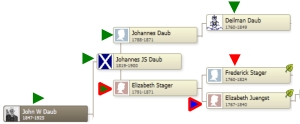
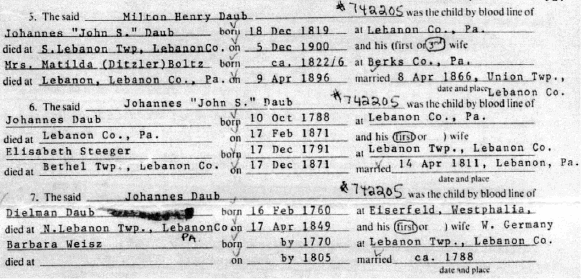

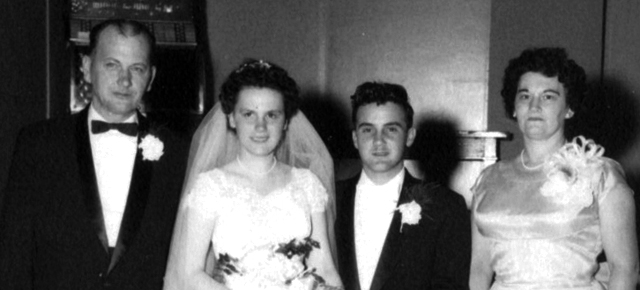

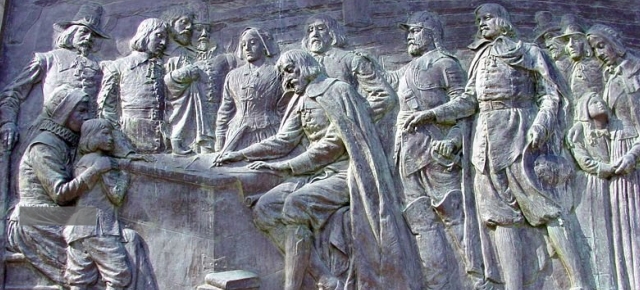

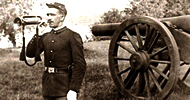

Welcome to the Geneabloggers family. Hope you find the association fruitful; I sure do. I have found it most stimulating, especially some of the Daily Themes.
May you keep sharing your ancestor stories!
Dr. Bill 😉
http://drbilltellsancestorstories.blogspot.com/
Author of “13 Ways to Tell Your Ancestor Stories” and family saga novels:
“Back to the Homeplace” and “The Homeplace Revisited”
http://thehomeplaceseries.blogspot.com/
http://www.examiner.com/x-53135-Springfield-Genealogy-Examiner
http://www.examiner.com/x-58285-Ozarks-Cultural-Heritage-Examiner